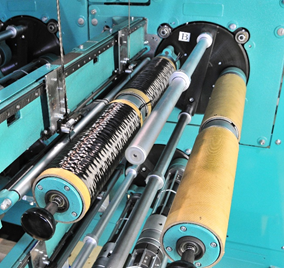Winding fibers to produce bobbins or fiber packages is a necessary evil in many composite production processes. Winding is an intermediate step and does not contribute to the production of the final product. If possible, it would be preferred not to wind, and instead take the fibers directly to the final product.
However, composite manufacturing processes come in all shapes, speeds, and sizes, so integrating the composite manufacturing process with the actual fiber production process is impossible. Therefore, we are left with the task of winding the fiber to an easy to handle form to take it to the next process.
When winding carbon fibers in particular, there are three main objectives:
1 – Good build shape of package
2 – No twist in the fiber
3 – Minimal damage of the filaments
The means of achieving these properties vary depending on the type of fiber, number of filaments in the tow, sizing type/content and various other factors. This may require actual test winding, but typically we can assist you based on our decades of experience as well. Optimum winding parameters such as tension or wind ratios are difficult to determine without experience and our team of engineers can help you achieve the winding characteristic desired.
In this article, we would like to go over the different types of winders available and what applications they are the most fit for.











